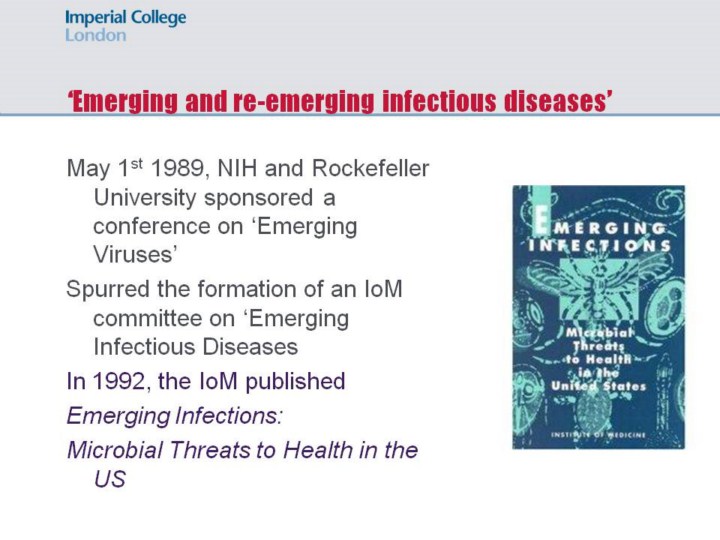| front |1 |2 |3 |4 |5 |6 |7 |8 |9 |10 |11 |12 |13 |14 |15 |16 |17 |18 |review |
 |
In 1989, the National Institutes of Health and Rockefeller University co-sponsored a conference on ‘emerging viruses’. One of the key people behind the conference was the Nobel Laureate Joshua Lederberg. The term was later modified to ‘emerging infectious diseases’ and thus acted as an umbrella which would include underlying concerns about the appearance of new viral infections such as HIV and the resurgence of bacterial infections. The conference spurred the formation of an Institute of Medicine committee and three years later in 1992, the publication of Emerging Infections: Microbial Threats to Health in the United States. This book, co-edited by Lederberg became the most comprehensive and widely cited statement of the new emerging diseases paradigm. From the mid 1990s, the emerging infectious disease paradigm has become established, with its own journals, conferences, professors and post graduate courses. Scientists, doctros and the public now think about infectious diseases as ‘emerging’ – not as a thing of the past, but of the future. Any new infectious disease is by definition ‘emerging’, and any pre-existing infectious disease you might think of, from measles to TB – is by virtue of the fact that it still infects people – ‘re-emerging’, at least into the public consciousness, and often from the poor of the world to the rich.
|